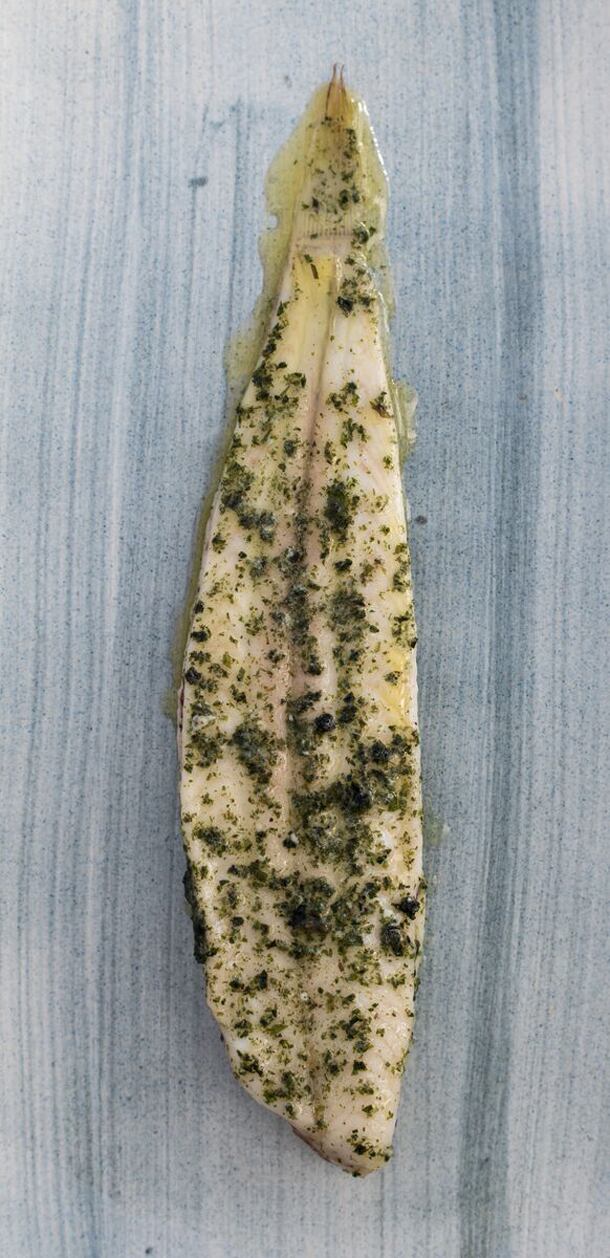For London-based gastropub operators ETM Group, the most important consideration when planning and designing quality seafood dishes is keeping a meticulous eye on seasonality and sustainability.
Seafood must be ethically sourced and fished, says Victoria Hassett, marketing co-ordinator at ETM Group. “There is so much undervalued and underused seafood that it is really worthwhile putting in a bit of extra research.”
Much of the group’s seafood is chosen by group director Tom Martin and operations director James Lyon-Shaw, who make daily morning visits to the capital’s Billingsgate market, choosing fish that is then delivered to the group’s 10 London sites.
“This direct approach ensures we work with only the freshest and premium quality product,” says Hassett. “Plus, it reduces the cost of working through a supplier — meaning we can pass on this saving to the customer.”
Thanks to this attitude to seafood, Hassett says sales tend to lean towards fish and shellfish more than meat in most ETM sites. “We have such a great story regarding the supply chain that people really buy into the quality we offer and the effort we put into sustaining it.”
She says her top tip for operators looking to expand their seafood offer is not to limit themselves to any one variety of fish — instead considering a range of different species.
Fresh, clean cooking techniques are fundamental, she says. “Let the fish talk for itself.”

Gourmet technique
For Antony Shirley, executive chef for Lancashire-based, seven-site Seafood Pub Company — which won Best Food Offer in the 2015 Publican Awards — consistency and simplicity are key.
“You have to ask whether you can get the product day in, day out, whether the price will be consistent and whether you can deliver it in terms of quality and freshness 100% of the time,” he says.
According to Shirley, one of the main challenges for a seafood-based food offer is the fact that sometimes the fish you need just hasn’t been caught on any particular day.
“The flipside with seafood is that you need to communicate to customers that every so often their favourite dish may not be available,” he says. “Although obviously with staples like fish and chips or fish pie you can make substitutes like using haddock in place of cod.”
A consistent approach
When sitting down to plan a menu, Shirley says it’s wise to go for varieties of fish that are 99% certain to be around. “We get consistent Loch Duart salmon, which is pretty close to wild salmon, our hake supply from west Scotland is amazing and consistent during the whole year and Morecambe bay monkfish is great for the summer.”
For specials, Shirley likes to use more seasonal fish, including mackerel, sardines, red mullet, squid and types of shellfish.
“When it comes to presentation, ours is very simple — our company mantra is ‘no dots, no dabs, no swipes’,” he laughs. “It’s almost a sackable offence — I want it written on my tombstone.
“You have to let the food do the talking. And you have to be practical — aim for a great chunk of fish with a nice garnish and good dressing.”
He adds: “With seafood, the less you do, the better it tastes. The number one mistake I see happen a lot with seafood is when people fiddle around or overwork it — for me there’s nothing wrong with grilling a fish, simply brushing it with some butter and a bit of Cornish sea salt. Treat it gently.”
Meeting demands
For Mike Berthet, director of fish and seafood at fresh fish supplier M&J Seafood, the most important consideration is customer profile.
“Pub operators must understand what their customers want,” he says. “It’s footfall that is needed and creating a menu that suits the customer demographic will drive this.
“For instance, if the demographic is mostly ‘Cs’ and ‘Ds’ then the menu should focus on large portions based on breaded, battered or value-added dishes. But if the typical customer is an ‘A’ or a ‘B’ then upmarket, tailor-made dishes using seafood such as monkfish, turbot, halibut and lobster may be more appropriate.”
According to Berthet, demand for seafood in pubs is increasing and customers now generally expect to see a variety of high-quality seafood dishes on menus.
Specials board
Having a specials board on Fridays and Saturdays is particularly important, he says. “Because although some customers will opt for standard pub food, just as many will be looking for something different to treat themselves at the end of a busy week.
“It’s important for pubs to remember that when families are out — especially during summer holidays — the choice of where to eat is often dictated by the children,” he adds. “Having a range of kids’ options such as salmon and haddock fish cakes and gurnard goujons is a must.”
Berthet says mussels are potentially one of the most lucrative products for pubs to take advantage of, with portions costing an average of £2 and retailing for up to £9.
Customer demand for hake is also on a high. “In the past 12 months we have probably sold 10 times as much hake as we did in the previous 12 months,” he says. “It is proving to be an extremely popular alternative to cod and haddock.”
For inquisitive chefs, he recommends utilising other, lesser known species such as Arctic char, gurnard and dab in dishes.

Put some sole into it
Stephen Harris, chef and co-owner of Top 50 Gastropubs 2015 winning Shepherd Neame lease the Sportsman, in Seasalter, Kent, says chefs need to be driven by what is available rather than what they want to cook.
“Above all you have to start with the quality of the product,” he says. “I believe there are certain chefs who sit down and think ‘right, I want to do a scallop dish’, which to me is instantly the wrong place to start.
“The right place to start for is to ask what the best seafood is that you can get your hands on — if it so happens that you can get scallops from the Orkneys that have been dived for, are the size of your fist, perfectly clean and beautiful, and in season, then you are in luck — but you have to be driven by what is available.”
Recipe bank
Harris recommends creating your own ‘canon’ of recipes for various central ingredients, so you won’t be lost with whatever produce is available. When it comes to planning these recipes, Harris says the first consideration is to find secondary ingredients that don’t mask the flavour of the central ingredient.
“You can spend so much time and money getting a great central ingredient,” he says. “You don’t want to mask it but you do want to make it more exciting, otherwise — as Jay Rayner said — it’s shopping, not cooking.
“For instance, it can be quite surprising how well pork goes with scallop. Scallop is naturally sweet — I once ate a bit of raw scallop and tested my blood sugar and it had skyrocketed as if I’d eaten a whole meal. So chefs traditionally wanted to complement it with other sweet ingredients like orange.”
The thought, he says, was that you shouldn’t fight the natural flavour of the product.
“Then somebody — I think it was [Joël] Robuchon — decided to serve cauliflower with it,” he says. “Everyone thought it was an outrageous combination, but think about it. Cauliflower is an earthy taste. You’ll eat a scallop with orange and think it tastes nice. Scallop with cauliflower will make the scallop sweeter and the cauliflower earthier. And everybody quickly cottoned on.”
